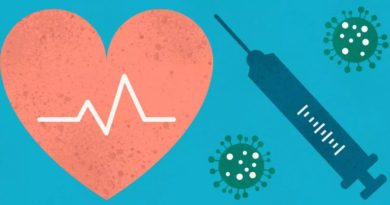From COVID-19 to voting: Trump is nation’s single largest spreader of disinformation, studies say
Is President Trump the nation’s chief disinformation officer?
Controversial posts concerning COVID-19 on Monday in which the president tells the public “Don’t let it dominate you” and “Don’t be afraid of it” and claims he may have immunity to the deadly virus have heightened public criticism of Trump for spreading dangerous falsehoods.
“There is no doubt that Donald Trump is the largest spreader of specific and important types of misinformation today,” said Graham Brookie, director of the Atlantic Council’s Digital Forensic Research Lab.
In the critical last weeks of the election, social media companies are facing a tsunami of conspiracy theories, hoaxes and fake claims on everything from COVID-19 to voting. And whether during a presidential debate, in press briefings or in posts on Facebook and Twitter, much of that misinformation is being generated and amplified by Trump, two recent studies show.
Trump returns to White House:Three days after he arrived at Walter Reed for COVID-19
‘Trump defeats COVID’ commemorative coin:You can preorder the $100 coin at the White House Gift Shop
Harvard’s Berkman Klein Center analyzed 55,000 online media stories, 5 million tweets and 75,000 posts on public Facebook pages with millions of interaction and concluded that Trump and his reelection campaign, using Twitter, press briefings and television interviews, is driving peaks in attention to disinformation around mail-in voting, absentee balloting and election rigging, according to research published last week.
A separate study out of Cornell University last week found that Trump is the “single largest” transmitter of misinformation surrounding COVID-19, hawking false “miracle cures” and dubious claims about the origins of the virus.
“The president’s social media presence is the tip of an iceberg with an entire amplification ecosystem of right-wing media, influencers, and outright conspiracy theorists making up the bulk below,” Brookie said.

That ecosystem went into overdrive on Monday when, before returning to the White House three days after being hospitalized and receiving aggressive medical treatment including therapies not widely available to most patients experiencing mild symptoms, the president told the public not to fear the deadly pandemic that has killed more than 210,000 Americans.
In social media posts on Facebook and Twitter, Trump advised his followers to not let COVID “dominate your life.”
“We have developed, under the Trump Administration, some really great drugs & knowledge,” he wrote, saying he felt better than he did “20 years ago.”
On Monday Trump also tweeted a video that claimed vaccines were coming “momentarily.”
The posts on Facebook and Twitter remain up and are not labeled. The Facebook post has been liked by 1 million people and the tweet has been retweeted hundreds of thousands of times on Twitter.
Twitter said the president’s tweet did not violate its rules on COVID-19 misinformation because it did not contain a clear call to action that could cause real-world harm. The company said it would continue to address misleading claims that directly contradict the guidance of health officials.
Facebook did not respond to requests for comment. It has said it does not permit posts about COVID-19 that could directly cause physical harm and would redirect users to an information center about the virus.
Neither social media company has been entirely hands off with the president. Twitter has labeled Trump’s tweets and in August, Facebook and Twitter removed a video clip shared by Trump that showed him saying during a Fox News interview that children are “almost immune” from COVID-19.
Trump and COVID-19:Facebook, Twitter and YouTube race to contain disinformation about president’s diagnosis
Trump, QAnon, Russia:Facebook, Twitter, YouTube brace for a turbulent election and post-election cycle
“President Trump’s social media posts today telling the public not to fear COVID-19 is public health misinformation and should be labeled with accurate information,” Brookie said. “It is shameful that much of his political future depends on him covering the mismanagement of COVID-19 with misinformation that downplays the danger that has led to over 200,000 Americans dead.”
Social media companies whose platforms were used to amplify falsehoods, conspiracy theories and inflammatory rhetoric in 2016 have been preparing for November’s presidential election for years.
There’s been an alarming rise in domestic meddling from groups such as extremist conspiracy movement QAnon, which are pumping out falsehoods. Foreign actors are stirring up trouble as they did four years ago. And remarks from Trump are threatening to undermine confidence in the election and in public safety during the pandemic.
“Are you kidding me?” Bob Wachter, chair of the UCSF Department of Medicine, responded to the president on Twitter. “After 210,000 deaths in the U.S. & 1 million deaths worldwide? This either shows a breathtakingly callous, inhumane & counterproductive attitude, or he has altered mental status – in which case the 25th Amendment should be invoked.”
But journalist Casey Newton, author of the online newsletter Platformer, says “Trump is a problem platforms can’t solve.”
“To me it seems clear that platforms play some role in contributing to all of these problems – and in some cases, a very large one,” he wrote Monday. “But to lay it all at the feet of a Facebook, or a YouTube, or a Twitter, seems too convenient. These platforms are part of a larger information sphere.”
*** This article has been archived for your research. The original version from USA TODAY can be found here ***



